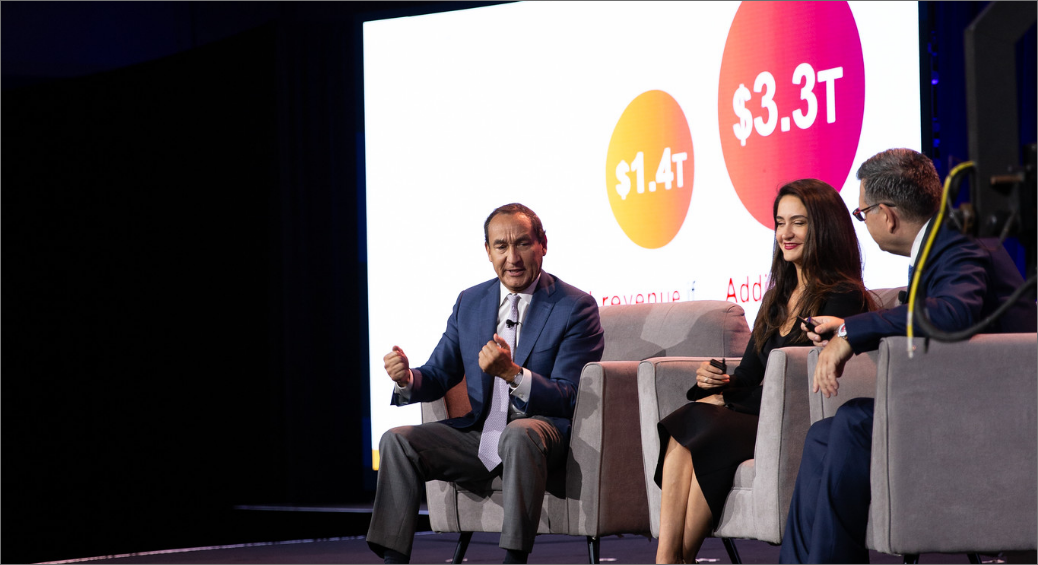JANUARY, 2022
More Economic Good News than Bad News
First, the bad news. Nationwide, the U.S. Latino unemployment rate of 6.5% remained higher than that of Anglo-Americans at 4.3%. And a national study reported that 24% of Latino-Americans on average over the last 12 months feared a loss of income, compared to 15% of Anglo-American adults.
Now, the good news not often reported. Two states reported U.S. Latino unemployment in the latest quarter that was much lower than the national average. Washington reported 4.7% Latino unemployment while Utah had just a 2.8% unemployment rate among U.S. Latinos.
At the same time, a Stanford State of Latino Entrepreneurship Study revealed a positive picture for Latino business owners. That study found that over the past two-years, Latino-owned firms grew revenue at an average of 25 percent per year while Anglo-owned businesses grew revenue at just 19 percent.
It is interesting, then, to look at the New American Economy Study of Recovery from the Great Recession. Their recession recovery data demonstrated that the greater the foreign-born share of a metro area’s population, the greater the post-recessionary rise in overall employment for all residents.
Metro areas with more immigrants were able to recover faster than those with fewer immigrants. On average, each additional 1 percentage point in the foreign-born share of the population in a metro area was associated with almost 800 more employed workers three years after the worst of the recession.
As of the most recently reported data, U.S. Latinos have a significant five percentage points greater workforce participation rate than that of non-Latinos, which would seem to reinforce how critical this cohort is to economic recovery, whether recovering from a recession or from a pandemic.
According to USA Facts, 86% of the overall U.S. Latino population was born in the US. That leaves only 14% residing here as new immigrants and even fewer as undocumented. This reality is dramatically different from the perception among Anglo-Americans that one-third of U.S. Latinos are undocumented, as reported by the Latino Donor Collaborative in their Perceptions of Latinos study.
Even so, it is important to understand the economic value of the immigrant Latino community, which the following analysis of recently has demonstrated reported U.S. economic data.
- Immigrant-led households across the United States contributed a total of $308.6 billion in federal taxes and $150 billion in combined state and local taxes in 2018.
- Undocumented immigrants in the United States paid an estimated $20.1 billion in federal taxes and $11.8 billion in combined state and local taxes in 2018.
- DACA recipients and those meeting the eligibility requirements for DACA paid an estimated $1.7 billion in combined state and local taxes in 2018.
The bottom line is that the U.S. Latino cohort is generating over $2.7 trillion in GDP in our economy, with over a trillion dollars being generated by immigrant consumers.
Most Entrepreneurial yet Most Under-capitalized
The U.S. Latino cohort is the most entrepreneurial cohort in the country, which is good news for our economy as this is also our country’s growth cohort. U.S. Latinos are second only to Anglo-Americans in business ownership, and in fact own more small businesses than Black-Americans and Asian-Americans combined. During the past decade, U.S. Latinos have accounted for well over half of all new employer business start-ups, and nearly 80% of all net new businesses including sole proprietorships.
Based on an analysis of working age population and the number of business owners per cohort, the entrepreneurial leadership of U.S. Latinos becomes clear, as the data show nearly 1 of every 5.5 Anglo-American households has a small business owner, compared to 1 of every 3.7 U.S. Latino households.
The bad news, remarkably, as pointed out by a Bain & Company report on Latino entrepreneurship, is that this is the most under-capitalized cohort in America. U.S. Latino-owned businesses received just a 1% share of all investments from the top 25 venture capital and private equity firms last year. The Bain & Company report demonstrated that an additional $1.4 trillion could be added to our economy if Latino-owned businesses could achieve revenue parity with Anglo-owned businesses as the result of increased access and connections to capital.
The Two Sides of the COVID Story
As of December 13, 2021, Anglo-Americans accounted for the largest share of unvaccinated people. At the same time, Latino-Americans were the most likely of all cohorts to have been vaccinated. That means the data from the CDC in October remains consistent, which showed that among those eligible for the vaccine — ages 12 and older – a higher percentage of U.S. Latinos had received at least one COVID-19 vaccine dose than the percent of Anglo-Americans who had. That’s a side of the vaccination story that isn’t told.
While that may be good news, there is also bad news. The L.A. Times reported disturbing data regarding U.S. Latinos who have contracted the virus. A December story claimed that in California, Latinos ages 20 to 54 have died from COVID-19 at a rate more than eight times higher than that of Anglo-Americans in the same age group. That alarming data is from a study by USC’s Department of Preventive Medicine.
Because not all states report vaccinations and COVID-related data by race/ethnicity and age, it is impossible to fully detail nationwide data. We do know that as of mid-December, federal data from the Centers for Disease Control and Prevention showed that 72.1% of the total population in the United States have received at least one dose of a COVID-19 vaccine, and the vaccination rate is growing.
Huge Population but Minimal Voice
A new report from the UCLA Latino Policy & Politics Initiative claims that Latinos are severely underrepresented in the opinion pages of The Los Angeles Times – an internationally renowned newspaper in a county that is 48.6% Latino.
The report, titled Unseen and Unheard: The Underrepresentation of Latino Voices and Stories in the Los Angeles Times Opinion and Editorials Section, reveals that only 4.3% of opinion pieces published between January 2020 and May 2021 were authored by a Latina/o, and that Latinas accounted for just 1.4%.
The UCLA report also pointed out that the L.A. Times has the worst Latino representation on their editorial board (a meager 11.1%) compared to peer newspapers. Given that nearly half of the county is U.S. Latino as is nearly 40% of the entire state, it is believed the L.A. Times should be setting the standard for giving Latinos a voice.
However, in a letter to UCLA from Hillary Manning, Vice President of Communications at the L.A. Times, she noted, “We have been actively working to increase diversity and representation without our newsroom, in the Opinion section and across our organization for years.”
She went on to note that Jean Guerrero joined the L.A. Times as an Opinion columnist in July, Crystal Villarreal was hired as the audience engagement editor for Opinion in July, Mariel Garza has been promoted to deputy editorial page editor, and Tony Barboza joined the editorial board in October. Manning also noted the makeup of the Opinion staff and contributors is currently 17% Latino, while the editorial board is currently 25% Latino.
The letter concludes with, “We welcome continued dialog with community leaders as we strive to make the L.A. Times reflective of our diverse and dynamic region.”
Regarding television and U.S. Latino representation, using a database of 30 million profiles, Zippia’s data science team found that across the country about 12% of television news anchors are Latinos and Latinas. Their average age is 41, and 51% are female while 46% are male.
With the U.S. Latino cohort now at nearly 20% of the total population, television news departments have work to do to
have their presenters accurately reflect the society on which they are reporting.
Loud Calls for Help, but No Answer
Nearly everywhere you go in every community across the country, you see similar signs in windows that say, “Now Hiring.” The latest report in December indicated as a country we’re now up to 11 million unfilled jobs. At the same time, we still have 2.4 million fewer people in the labor force than before the pandemic, many of whom will never return due to retirement.
Even if we got to zero unemployment, we’d still be some 5 to 6 million workers short of being able to fill those 11 million vacant jobs. In addition, the bi-partisan legislation that Congress passed to build our economy and rebuild our infrastructure could create over one million new jobs annually for the next several years. Who will fill them?
It is obvious that our country faces a shortage of workers, and that even with U.S. Latinos providing the major source of population growth, that won’t be enough. If we don’t encourage and welcome new workers to our country, a growing number of jobs will go unfilled, followed by a decline in consumption, and tax revenues generated by new jobs and increased spending will be lost. As
a result, a growing number of seniors dependent on Social Security and Medicare could be potential victims of a bankrupt support system.
Fifteen years ago Immigration was growing at a 12.7 percent rate, our workforce was growing 3.6 percent, and as a result, our country’s GDP was at a healthy growth rate of 3.5 percent. Fast forward to 2020, and immigration was barely growing at just one-half percent. Not surprising, the growth of our labor force was
also at one-half percent, which without U.S. Latinos would have been negative, given our birth rates. The result was a dismal
GDP growth just before the pandemic, followed by further, dramatic decline.
The source of new workers is immigration. There has been a lot of talk about the need for immigration reform, but still Congress hasn’t responded to the growing clamor for “Help Wanted” from American business. Maybe 2022 will be the year our leaders from both sides of the aisle acknowledge immigration reform is an economic imperative.





